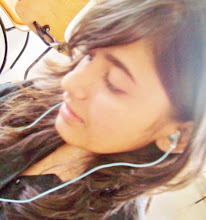'thereafter...' is a photography exhibition by Chennai-based photographer, Srikanth Kolari, at Seagull Arts & Media Resource Centre at Kolkata from the 13th to 23rd May, depicting his photographic journey in Kashmir, Jharia, and the Tsunami coast.
Srikanth, better known as Sri, asks not be called an artist or a photojournalist. Instead, he prefers to assume the role of a 'messenger', motivated by his personal history to seek out stories and convey their messages through his photographs. His photographs demand an accompanying narrative, be it a line to describe it or a whole paragraph, with the subject and its surroundings contexualised through the words. Another technique he sometimes uses is to clip and join two frames to 'generate a new motion in the mind'. What this also does is give a stronger and harsher feel to the reality portrayed. This was implemented in his Kashmir photographs very well.
Seagull is associated with Tasveer, the first Pan-India gallery dedicated to photography as an art, and Ganjam, a jewelry brand which is the sponsor for this exhibition. These three platforms have joined hands and made this exhibition possible. "Seagull is the Kolkata partner for Tasveer, and tigether, we try to promote photography. Tasveer does shows in 4 other cities in India. Srikanth was supposed to come and give a talk to students for our project, Peaceworks, which uses various art forms to promote peace but was unable to make it this time. He should hopefully be able to come for the next show," says an optimistic Megha Malhotra of the Seagull group.
The exhibition focuses on the effects certain incidents or concurring incidents have had on the people in that region.
To start with, his photographs in Kashmir clearly show the effect that the conflicts since 1989 have had on the people. The husbands and sons of the women there have often been suspected to be militants by security forces and killed, women have been raped, and civilians have been tortured in many ways. The post-traumatic depression, the sunken suicidal eyes, and the depth of the losses that the people suffered come through in the photographs. Though the violence has considerably subsided now, generations will suffer from it effects.
The next affected place portrayed was the coalfields of Jharia in Jharkhand. The photographs depict the lives of coalfield workers in Jharia-villagers stealing coal from loading areas, contaminated water bodies, sulphurous smoke everywhere, and other daily activities of Bharat Coking Coal Limited (BCCL) workers. A memorable image is that of the charred hands of a worker, showing how the effects are skin deep. The problem in this area is the coal fires that arise due to unscientific mining and coal extraction in the past. Relocation of the locals to combat these fires is more troublesome than fighting the fire and hence, nothing is done about it. To add to the woes, these fires cause pollution that affects air, water and land, which become the everyday realities of people living in these regions.
The last place depicted are the tsunami affected areas in Tamil Nadu's Kadalor district and Chennai's Marina Beach. The central and state governments of Tamil Nadu, Andhra Pradesh, Kerala, and the Union Territories of Puducherry and Andaman & Nicobar Islands have not maintained their legal and moral responsibilities in providing adequate compensation and rehabilitation to the tsunami survivors. There have also been delays in providing permanent housing and restoring livelihoods. The photographs portray a temporariness in the lifestyles of people and the focus is on the life of fishermen after the tsunami.
The dedication to portraying the subject as close to its reality as possible is seen in the photographs. All of them are in black and white, lending an even more favourable depth to the images displayed. Sugata Srinivasaraju wrote the essay for Sri's book, "Thereafter...", the compilation of the photographs displayed in the exhibition, and his words sum up Sri's photography. He writes: "The camera is often an insensitive, loud and selfish being. It stirs silence, intrudes privacy, and violates the sanctity of every grave moment. But in the hands of Sri, it endeavours to become an instrument of compassion."
Note: This piece did not get published in IE because it got forwarded to the Delhi office after the exhibition ended. Still, my blog has more than enough space for it. The photographs have been taken from various sites online and have all been taken by Sri.






1 comment:
Hi Rohini, I was really happy to read your views on Srikanth Kolari's works. You have beautifully described his works. He has infact created thought provoking images even in his early days of Photography. I am frantically in search of a means to contact Srikanth. He is an alumnus of Ambitions 4 Photography Academy, Chennai where I work now. Please let me know if you are able to get any contact details of Srikanth. Eagerly awaiting your reply.
Preethaa R.
preethaa.priyadharshini@gmail.com
Post a Comment